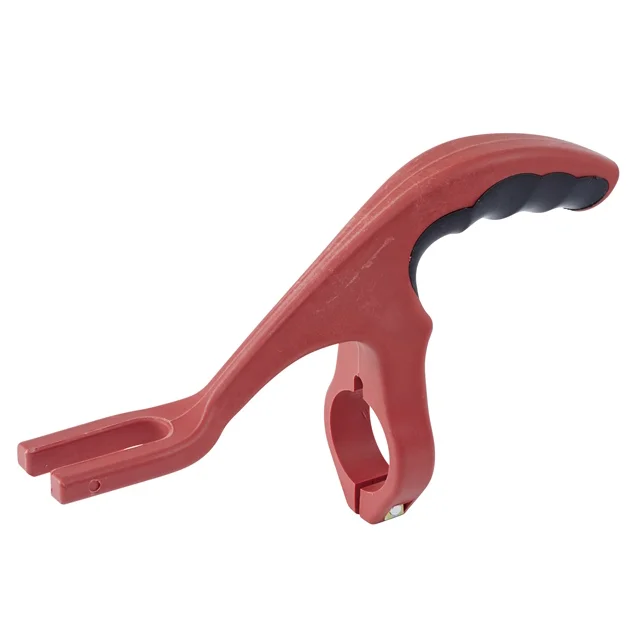When it comes to metal roofing, precision and efficiency are paramount. Metal roof panels, often made from corrugated iron or steel, offer durability, strength, and aesthetic appeal. However, the process of cutting these panels requires specialized tools to ensure clean, accurate, and safe results. One such essential tool in the roofing industry is the corrugated iron cutter. In this blog, we’ll delve into the significance of corrugated iron cutters, explore their various types, and discuss their role in cutting metal roof panels effectively.
What Are Corrugated Iron Cutters?
Corrugated iron cutters are specialized tools designed to cut through corrugated iron or metal sheets with precision. These tools are engineered to handle the unique challenges posed by corrugated materials, which feature a wavy pattern that can be difficult to cut accurately with standard cutting tools. Corrugated iron cutters come in various forms, including manual snips, power shears, and specialized blades, each suited to different cutting needs and scenarios.
Why Corrugated Iron Cutters Are Essential
1. Precision and Accuracy
Corrugated iron panels are designed with a specific profile and thickness to enhance their structural integrity and performance. Cutting these panels requires a tool that can maintain the integrity of the corrugations while achieving a precise cut. Corrugated iron cutters are engineered to handle the intricacies of the wavy pattern, ensuring that cuts are clean and accurate. This precision is crucial for maintaining the panels’ fit and function when installed, preventing issues such as leaks or structural weaknesses.
2. Clean Cuts
One of the primary challenges in cutting corrugated iron is avoiding jagged or rough edges, which can compromise the panel’s effectiveness and aesthetic appeal. Corrugated iron cutters are designed to provide smooth, clean cuts that minimize the need for additional finishing work. Clean cuts not only improve the overall appearance of the roof but also help in preventing rust and corrosion that can occur from exposed, rough edges.
3. Efficiency and Speed
In construction and roofing projects, time is of the essence. Corrugated iron cutters are designed to cut through metal panels quickly and efficiently, allowing for faster completion of projects. Whether using manual snips or power shears, these tools are built to handle the demands of high-paced work environments, ensuring that the cutting process does not hinder overall productivity.
4. Safety
Cutting metal panels can be hazardous, especially when using inappropriate tools. Corrugated iron cutters are designed with safety in mind, featuring ergonomic handles, sharp blades, and robust construction to minimize the risk of accidents. Proper use of these tools reduces the likelihood of injuries associated with cutting metal, such as cuts or lacerations.
Types of Corrugated Iron Cutters
1. Manual Snips
Manual snips, also known as tin snips or aviation snips, are hand-operated tools designed for cutting thin sheets of metal. They come in various types, including straight-cut, left-cut, and right-cut snips, each suited for different cutting angles and directions. Manual snips are ideal for smaller projects or precise cuts where power tools may be impractical.
Advantages:
- Portability and ease of use
- Precision in cutting small sections
- No need for external power sources
Disadvantages:
- Limited cutting capacity for thicker or larger panels
- Requires physical effort and can be time-consuming for larger projects
2. Power Shears
Power shears are electrically or battery-operated tools that provide greater cutting power and speed compared to manual snips. They are designed to handle thicker metal panels and large volumes of cutting work with ease. Power shears come in various configurations, including corded and cordless models, each offering different levels of convenience and performance.
Advantages:
- Faster and more efficient cutting
- Capable of handling thicker materials
- Reduced physical effort compared to manual snips
Disadvantages:
- Requires access to a power source (for corded models)
- Higher initial cost and maintenance
3. Metal Cutting Blades
Metal cutting blades are specialized blades designed for use with circular saws or reciprocating saws. These blades are engineered to cut through metal panels with precision and speed. They are particularly useful for larger projects where manual or power shears may be less practical.
Advantages:
- Suitable for cutting large panels and long straight lines
- Can be used with existing saws or tools
- Provides clean and accurate cuts
Disadvantages:
- Requires appropriate saw or tool for operation
- Potential for increased noise and dust during cutting
Applications in Metal Roof Panel Cutting
1. Residential Roofing
In residential roofing projects, corrugated iron panels are often used for their durability and weather resistance. Accurate cutting of these panels is essential to ensure a proper fit and to prevent issues such as leaks or poor insulation. Corrugated iron cutters enable roofers to achieve the necessary precision for a seamless installation.
2. Commercial Roofing
Commercial buildings frequently use corrugated metal roofing due to its strength and longevity. In these projects, the efficiency and speed of corrugated iron cutters are crucial for meeting tight deadlines and ensuring the structural integrity of the roof. Power shears and metal cutting blades are often employed in commercial settings for their ability to handle large volumes of cutting work.
3. DIY Projects
For DIY enthusiasts and home improvement projects, corrugated iron cutters provide a practical solution for working with metal roofing panels. Whether building a shed, garage, or garden structure, having the right cutting tools ensures that the metal panels can be trimmed to size accurately and efficiently.
Conclusion
Corrugated iron cutters play a vital role in the cutting and installation of metal roof panels, offering precision, efficiency, and safety. By understanding the different types of cutters available and their applications, you can choose the right tool for your specific needs, whether you’re working on a residential, commercial, or DIY roofing project. Investing in quality corrugated iron cutters ensures that your metal roofing projects are completed with professional results, enhancing both the functionality and appearance of the final installation.



